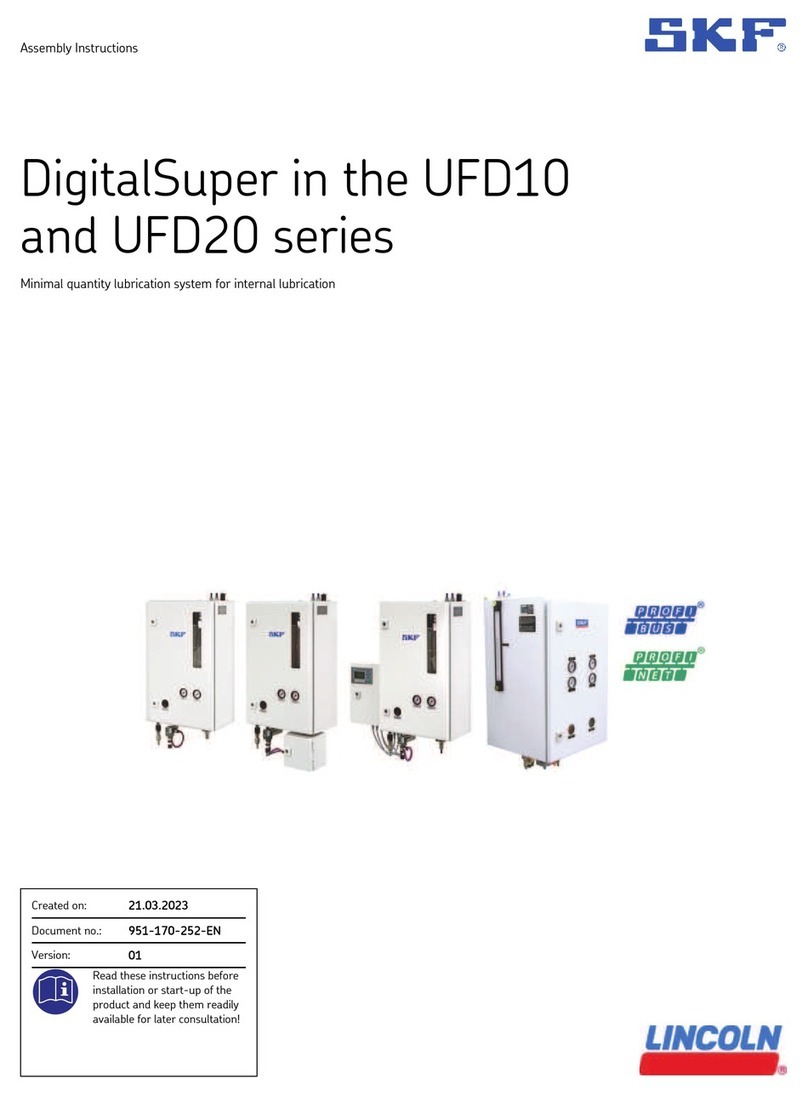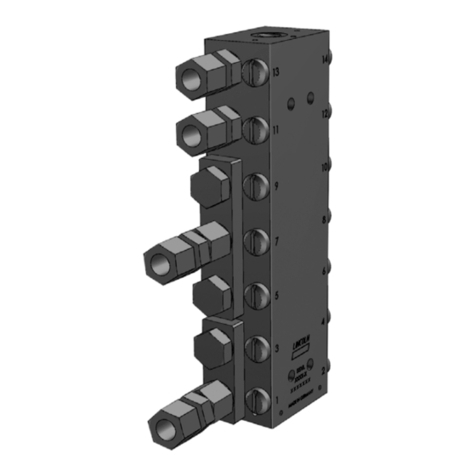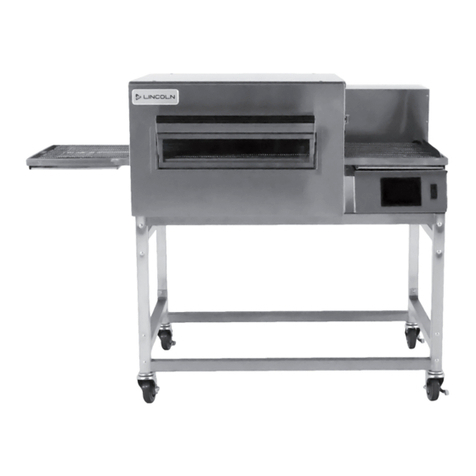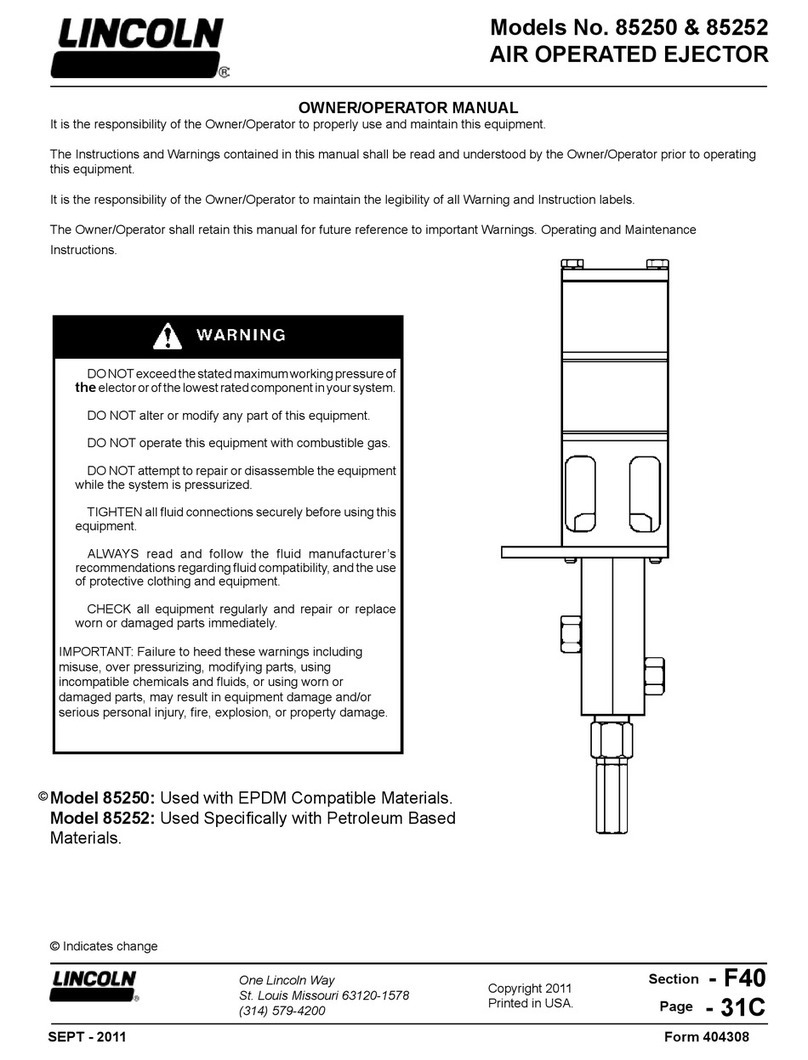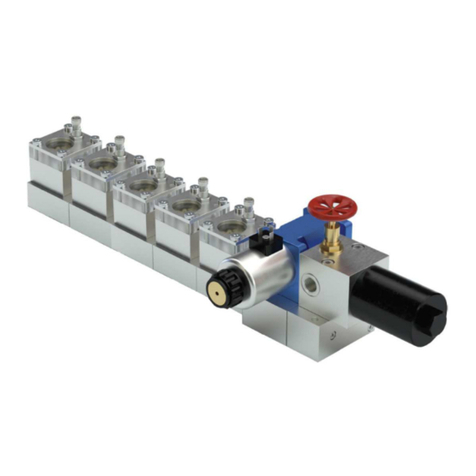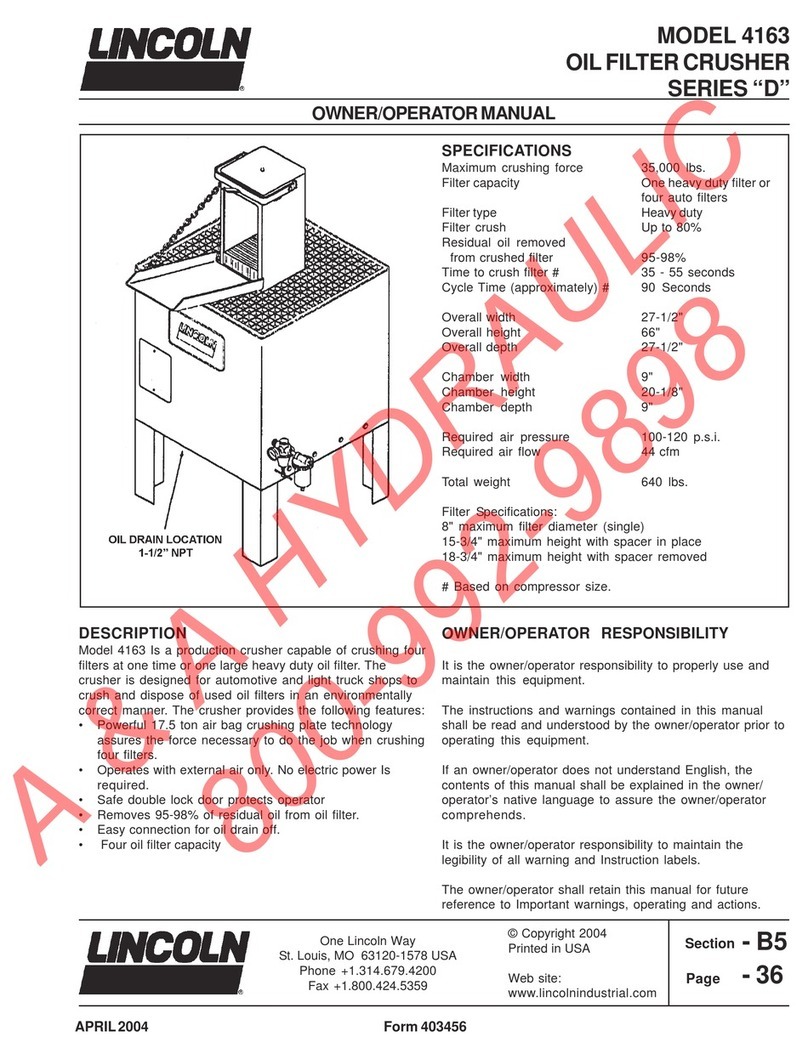Lincoln Impinger Aperion 2424E User manual

Part Number 4605890 Rev 0 July 2021
Lincoln Aperion 24 Impinger®
Conveyor Oven
Installation, Operation and Maintenance Manual
FOR 60 HZ
Original Instructions

Safety Notices
DEFINITIONS
DANGER
Indicates a hazardous situation that, if not avoided, will
result in death or serious injury. This applies to the most
extreme situations.
nWarning
Indicates a hazardous situation that, if not avoided, could
result in death or serious injury.
,Caution
Indicates a hazardous situation that, if not avoided, could
result in minor or moderate injury.
Notice
Indicates information considered important, but not
hazard-related (e.g. messages relating to property
damage).
NOTE: Indicates useful, extra information about the
procedure you are performing.
Read These Before Proceeding:
DANGER
Donotinstalloroperateequipmentthathasbeenmisused,
abused, neglected, damaged, or altered/modified from
that of original manufactured specifications.
Important
Read these instructions for use carefully so as to familiarize
yourself with the appliance before connecting it to its gas
container. Keep these instructions for future reference.
nWarning
Improper installation adjustment, alteration, service
or maintenance can cause property damage, injury or
death. Read the installation, operating and maintenance
instructions thoroughly before installing or servicing this
equipment.
nWarning
Authorized Service Representatives are obligated to follow
industry standard safety procedures, including, but not
limited to, local/national regulations for disconnection
/ lock out / tag out procedures for all utilities including
electric, gas, water and steam.
nWarning
This appliance is not intended for use by persons
(including children) with reduced physical, sensory or
mental capabilities, or lack of experience and knowledge,
unless they have been given supervision concerning use
of the appliance by a person responsible for their safety.
Do not allow children to play with this appliance.
nWarning
This equipment is intended for indoor use only. Do not
install or operate this equipment in outdoor areas.
nWarning
Do not use electrical appliances or accessories other than
those supplied by the manufacturer.
FOR YOUR SAFETY
Do Not Store Or Use Gasoline Or Other Flammable Vapors
Or Liquids In The Vicinity Of This Or Any Other Appliance.
nWarning
Never use a high-pressure water jet for cleaning or hose
down or flood interior or exterior of units with water. Do
not use power cleaning equipment, steel wool, scrapers
or wire brushes on stainless steel or painted surfaces.
,Caution
Maintenance and servicing work other than cleaning as
described in this manual must be done by authorized
service personnel.
,Caution
Improper cleaning of oven could damage catalyst(s) in
ventless models and will void unit warranty.
NOTE: Proper installation, care and maintenance are essential
for maximum performance and trouble-free operation of
your equipment. Visit our website www.wbtkitchencare.com
for manual updates, translations, or contact information for
service agents in your area.

Table of Contents
Part Number 4605890 Rev 0 July 2021 3
Safety Notices ................................................................................................................... 2
Definitions....................................................................................................................... 2
Section 1
General Information
Purchaser’s Responsibility ................................................................................................. 5
Additional Requirements ................................................................................................5
Section 2
Installation
Exterior Dimensions .......................................................................................................... 6
Utility Specifications.......................................................................................................... 7
Canopy Ventilation Recommendations .............................................................................. 8
Installation Requirements ................................................................................................. 9
Gas Code Requirements..................................................................................................9
Electrical Code Requirements .........................................................................................9
Spacing Requirements................................................................................................... 10
Ventilation Requirements ............................................................................................. 10
Restraint Requirement – Oven(s) on Casters ................................................................11
Installation ...................................................................................................................... 12
Packing and Weights .....................................................................................................12
Uncrating....................................................................................................................... 12
Installation of 2424 Oven................................................................................................. 12
For Countertop Installation.............................................................................................. 12
For Floor Installation ....................................................................................................... 14
Start-Up Checkout ........................................................................................................... 15
Start-Up Procedures ........................................................................................................ 16
Smoke Candle Test – Ventilation System Verification....................................................16
Installation Checklist ....................................................................................................... 16
Checklist ........................................................................................................................ 17
Section 3
Operation and Programming
Introduction .................................................................................................................... 18
Startup ............................................................................................................................ 18
Recipe Selection (Press & Go Button) ..........................................................................18
ECO Mode .................................................................................................................... 19
Manual Mode ............................................................................................................... 20
Changing Temperature and Cook Time (Belt Speed).....................................................20
Settings Mode .............................................................................................................. 22
Diagnostics Mode .........................................................................................................22
Oven Shut Down ........................................................................................................... 23

4 Part Number 4605890 Rev 0 July 2021
Table of Contents (continued)
Section 4
Maintenance
Operator Maintenance .................................................................................................... 24
Cleaning Instructions..................................................................................................... 24
Daily Cleaning ................................................................................................................. 24
Weekly Cleaning.............................................................................................................. 25
Conveyor Removal........................................................................................................... 25
Finger Removal ............................................................................................................... 25
Preventive Maintenance.................................................................................................. 26
Section 5
Troubleshooting
General Issues ................................................................................................................. 27
UI Alarm Messages.......................................................................................................... 28
Thermal Cut-Out Switch for Control Box Components...................................................... 28
How to Obtain Service..................................................................................................... 28

Part Number 4605890 Rev 0 July 2021 5
Purchaser’s Responsibility
It is the responsibility of the purchaser:
1. To see that the gas and electric services for the oven are
installed on site in accordance with the manufacturer’s
specification.
2. To unload, uncrate, and install the oven in its proper
location; in accordance with this installation/operation
manual.
3. To see that the gas and electric services are connected
properly by a qualified installer of your choice. For
installation in the State of Massachusetts: Installation
of this oven must be performed by a licensed plumber
or gas fitter. All such connections must be in accordance
with applicable code requirements. Refer to “Installation
Requirements” section for specific information.
4. To arrange for inspection and operation check-out by an
Authorized Service Technician as described below:
Do not attempt to operate the oven until connection
of utility service has been fully inspected by a Factory
Authorized Servicer or a Lincoln Foodservice Products, LLC
Service Representative. This service is required by Lincoln
Foodservice Products, LLC in order to assist the purchaser
in proper start-up of the oven on site. Please note the
specific details on the Warranty Policy and make sure that all
connections are made to the proper utility services.
The warranty shall not apply if the oven(s) are started up and
operated prior to the utilities and oven being inspected and
check-out made by a Factory Authorized Servicer or a Lincoln
Foodservice Products, LLC Service Representative.
ADDITIONAL REQUIREMENTS
• Obtain from your local gas provider and post in a
prominent location instructions to be followed in the
event gas odors are detected.
• It is required that the oven be placed under a ventilation
hood to provide for adequate air supply and ventilation.
• Minimum clearances must be maintained from all walls
and combustible materials. See “Spacing Requirements”
section for more information.
• Keep the oven free and clear of combustible material.
• Adequate clearance for air openings to the combustion
control chamber on the right side of the oven is required.
• Do not obstruct the ventilation holes in the control
panels, as these provide the combustion air for the
burner and cooling air for the controls.
• The oven is to be operated only on the type of gas and/or
electricity as shown on the specification plate.
• The power burner will not operate and gas will not flow
through the burner without electrical power.
• This manual should be retained for future reference.
• The electrical wiring diagram is located under the control
box covers.
IN AUSTRALIA: Refer to Standard AS 5601. This standard
specifies the requirements for piping, flues, ventilation and
appliance installation associated with use of or intended use
of fuel gases. The requirements of AS 5601 are to be used
in conjunction with, but do not take precedence over, any
statutory regulations that may apply in any area.
All ovens require separate service and dedicated neutral.
Gas Pressure Conversion
Inches of Water
Column kPa m-Bar Millimeters of
Water Column
3.5
4.5
7
8
9.2
10
10.5
11
14
14.5
0.87
1.12
1.74
1.99
2.29
2.48
2.61
2.73
3.48
3.61
8.70
11.2
17.40
19.90
22.90
24.87
26.11
27.36
34.81
36.05
88.9
114.3
177.8
203.2
233.7
254.0
266.7
279.4
355.6
368.3
Section 1
General Information

6 Part Number 4605890 Rev 0 July 2021
Exterior Dimensions
ELECTRIC POWER
CONNECTION LOCATION
26.1875"
(665 mm)
26.4375"
(672 mm)
63.5"
(1613 mm)
38.75"
(984 mm)
DOOR SWING
CONVEYOR ASSEMBLY
48.5625"
(1233 mm) 11.6875"
(297 mm)
12.25"
(311 mm)
5.625"
(143 mm)
10.6875"
(271 mm)
13.1875"
(335 mm)
6.5625"
(141 mm)
40.0625"
(1018 mm)
29.5625"
(751 mm)
18.1875"
(462 mm)
21.875"
(556 mm)
37.9375"
(964 mm)
40.0625"
(1018 mm)
24.8125"
(630 mm)
48.4375"
(1230 mm)
BODY: Stainless steel. Easy open front for simple cleaning.
POWER: Electric, or Gas and Electric
CONVEYOR: Stainless steel construction with flexible stainless steel belt, travel distances of 48 inches (1220 mm) with
24 inches (610 mm) in the baking area. Conveyor belt width is 24 inches (610 mm). Speed range: 20 seconds –
30 minutes.
DB LEVEL: ≤ 70dba
OPERATING TEMPERATURE
RANGE:
Gas 250° - 600°F (121° - 316°C) Electric 250° - 600°F (121° - 316°C)
NOTE: Specifications are subject to change. Above data should be used for estimating purposes only.
Section 2
Installation

Part Number 4605890 Rev 0 July 2021 7
Section 2 Installation
Utility Specifications
Electric Ovens
Model Energy Power Voltage Current Phase Hz Recommended Electrical
Specification
2424E Electric 13 kW 208-240 VAC 48A 3 60 4 Wires, 3 Line +G
All ovens require separate service and dedicated neutral.
Notice
Do not install the (these) oven(s) in any area with an
ambient temperature in excess of 95°F / 35°C. Doing so
will cause damage to the unit.

8 Part Number 4605890 Rev 0 July 2021
Installation Section 2
Canopy Ventilation Recommendations
8"
(203 mm)
CAPTURE AREA CAPTURE AREA
Capture Velocity 50 FPM
(914 m/hour)
18"
(457 mm)
Capture
Velocity 50 FPM
(914 m/hour)
8"
(203 mm)
6"
(152 mm)
6"
(152 mm)
18"
(457 mm)
78"
(1981 mm)
AFF TYP
AFF = Above Finished Floor
NOTE: The drawing shown is a typical installation and
is intended to be a guideline. Hood dimensions and the
positioning of the hood over the oven will vary with hood
manufacturers.
A smoke candle test is performed at Start-Up Checkout to
verify proper hood operation. Refer to page 16.
NOTE: Lincoln can provide oven spec sheets that show
the dimensions of the oven, kW or BTU ratings and other
information that will be useful to both the ventilation hood
supplier and the HVAC contractor.

Part Number 4605890 Rev 0 July 2021 9
Section 2 Installation
Installation Requirements
DANGER
All utility connections and fixtures must be maintained in
accordance with local and national codes.
GAS CODE REQUIREMENTS
nWarning
A manual shut-off valve must be installed in the gas
supply (service) line upstream of this appliance so that
the test plug is on the oven side of the valve.
Safe and satisfactory operation of this oven depends to a
great extent upon its proper installation, and it should be
installed, as applicable in accordance with the National
Fuel Gas Codes, ANSI Z223.1/NFPA 54, latest version,
manufacturers’ installation instructions, local municipal
building codes, and ISO 203-1.
1. The oven and its individual shut off valve must be
disconnected from the gas supply piping system during
any pressure testing of that system at test pressures in
excess of 1/2 psig (3.45 kPa).
2. The oven must be isolated from the gas supply piping
system by closing its individual manual shutoff valve
during any pressure testing of the gas supply system at
test pressures equal to or less than 1/2 psig (3.45 kPa).
IN MASSACHUSETTS: The minimum length of a flexible gas
supply hose is thirty-six (36") inches.
IN CANADA: The installation of these appliances is to be in
accordance with CSA B.149.1 latest version – Natural Gas and
Propane Installation Code – and/or local codes.
IN AUSTRALIA: To be installed in accordance with AS 5601-
2004 and 4563-2004 Gas Installation Code.
ELECTRICAL CODE REQUIREMENTS
nWarning
This appliance must be properly grounded at time
of installation. Failure to ensure that this equipment
is properly grounded can result in electrocution,
dismemberment or fatal injury.
When installed, this appliance must be electrically grounded
and its installation must comply with the National Electric
Code, ANSI-NFPA 70, latest edition, the manufacturers’
installation instructions, and applicable local municipal
building codes.
IN CANADA: All electrical connections are to be made
in accordance with CSA C22.2 latest version – Canadian
Electrical Code and/or local codes.
ALL OTHER COUNTRIES: Local gas and/or electrical codes will
prevail.
1. Strain Relief is provided with each oven. International
Dealer/Distributors provide applicable power cord/plug
for each customer.
2. All pole disconnection switch must have 3 mm open
contact distance.
3. To prevent electrical shock, an equal potential bonding
ground lug is provided in the back. This allows the oven
to be connected to an external bonding system.
4. If used as double stack or triple stack1and each oven
has its own disconnection switch, all switches should be
close together.
12424 ventless ovens equipped with a catalyst(s) are
approved for single oven ventless operation.

10 Part Number 4605890 Rev 0 July 2021
Installation Section 2
SPACING REQUIREMENTS
,Caution
Oven must be operated on an approved base only.
The oven must have a minimum of 8 inches (203 mm) of
clearance from all surfaces. In case other equipment is
located on the right side of oven, a minimum clearance of 24
inches (609 mm) is required from that equipment.
FOR ALL OVENS: A 24-inch (609 mm) clearance at the rear of
the oven must be obtainable for service access.
FOR PERMANENTLY INSTALLED OVENS: A permanently
installed (unmovable) oven requires a minimum of 4'
(1219 mm) clearance on the right hand side to allow for
conveyor removal, cleaning, and servicing.
NOTE: Do not install this (these) oven(s) in any area with an
ambient temperature in excess of 95°F/35°C. Doing so will
cause damage to the unit.
VENTILATION REQUIREMENTS
A VENT IS REQUIRED: Local codes prevail. These are the
“authority having jurisdiction” as stated by the NATIONAL
FIRE PROTECTION ASSOCIATION, INC. in NFPA 96 latest
edition. In addition, to be in compliance with the NFPA 54
Section 10.3.5.2, this unit must be installed with a ventilation
hood interlock that prevents the unit from operating
when the ventilation hood is off. For further ventilation
information, see Ventilation Guidelines.
Ventilation Guidelines
For standard ovens, a ventilation hood is required to remove
heat and cooking odors. Alternatively, optional electric
“ventless” models are available which incorporate a catalyst
to limit the emission of grease laden air to below 5mg/
m3. Ventless ovens have been tested in accordance with
UL710B & EPA-202 and are listed by UL to the KNLZ category.
Ventless ovens should only be used for reheating purposes
and should not be used to cook raw animal proteins, doing
so may cause the appliance to exceed allowable grease laden
air limits and/or cause damage to the catalyst. Ventless oven
models can be identified by the “-V-” suffix as part of their
model number, refer to the spec sheet for more details.
When permitted by local code(s) and used with appropriate
food products, Lincoln “ventless” ovens are not required
to be installed under a ventilation hood. For gas ovens, a
ventilation hood is also required to remove the products of
combustion. The hood and HVAC installation must meet local
codes to gain approval by the authority having jurisdiction.
Requirements may vary throughout the country depending
on the location by city, county, and state. Obtain information
from the authority having jurisdiction to determine the
requirements for your installation. Obtain information and
review copies of codes or documents that will be used to
inspect and approve your installation. Your ventilation hood
supplier and HVAC contractor should be contacted to provide
guidance. A properly engineered and installed ventilation
hood and HVAC system will expedite approval and reduce
oven maintenance costs. Proper ventilation is the oven
owner’s responsibility.
The ventilation hood must operate in harmony with the
building HVAC system. It typically requires between 750
and 2500 CFM (1274 and 4248 m3/hour) exhaust. (The
“Efficiency” of various hood designs makes it necessary
to specify such a wide range of ventilator flow.) Make
up air must be supplied by either a hood design or the
HVAC system. This will vary with hoods from various
manufacturers.
Notice
Prevent airflow through the cooking tunnel. Air must NOT
be directed onto the oven front or at side of cooking area
or rear of oven.

Part Number 4605890 Rev 0 July 2021 11
Section 2 Installation
RESTRAINT REQUIREMENT – OVEN(S) ON CASTERS
• The installation shall be made with a gas connector that
complies with the local codes for Connectors for Movable
Gas Appliances, ANSI Z21.69 • CSA 6.16 latest version,
and a quick disconnect device that complies with the
local codes for Quick Disconnect Devices for Use with Gas
Fuel, ANSI Z21.41 • CSA 6.9 latest version.
• The installation of the restraint must limit the movement
of the oven(s) without depending on the connector, the
quick disconnect device or its associated piping to limit
the oven movement.
• If the restraint must be disconnected during maintenance
or cleaning, it must be reconnected after the oven has
been returned to its originally installed position.
Procedure
1. Secure anchor wall/floor mount bracket “D” to wall stud
“C” or floor “E”.
2. Secure eye bolt “B” into threaded hole located in the
oven bottom (See drawing below).
3. Attach restraint cable “A” with supplied carabiners to
both the eye bolt “B” and wall/floor bracket “D”.
4. Adjust/shorten restraint cable to limit oven movement.
NOTE: Installation point is the same for single, double, or
triple-stacked ovens.
Wall
E
Floor
C
Stud
Back of Oven
D
BA
Restraining
Hole
A
B
D

12 Part Number 4605890 Rev 0 July 2021
Installation Section 2
Installation
The instructions that follow are intended as a guide
for preparing for the installation of the Lincoln Aperion
Impinger® oven. First and foremost, each crate should be
examined before signing the Bill of Lading to report any
visible damage by the trucker in transit, and to account for
the proper number of crates.
IF THERE IS APPARENT DAMAGE:
UNITED STATES AND CANADA: Arrangements should be made
to file a claim against the carrier, as Interstate Commerce
Regulations require that the consignee initiate a claim.
ALL SHIPMENTS TO OTHER COUNTRIES: Freight terms will be
developed and extended on an individual basis.
Proper and secure storage facilities should be arranged for
the oven(s). If necessary, protect it from outdoor or damp
conditions at all times before installation.
PACKING AND WEIGHTS
All uncrated components of the Lincoln Aperion Impinger®
oven will pass through a 30" (762 mm) wide door. The
Impinger® Conveyor Oven consists of:
Cartons Weight of Each Dimensions of Each
1 – oven
(domestic)
430 lbs.
(195 kgs)
41" x 59" x 18.75"
(1042 x 1499 x 476 mm)
UNCRATING
When you have all the crates unloaded, open the crates and
remove the plastic covers. Inspect at once for concealed
damage. If anything appears to be damaged, contact the
appropriate persons immediately to file a damage claim.
After completing this inspection, finish unpacking the oven
and all other components. Be sure to remove the packing
cardboard from the plenum shroud. Move all components
inside near the area where they will be assembled in the
order in which they will be assembled.
Installation of 2424 Oven
1. Using multiple people, a crane, or forklift remove the
oven from the crate carefully. (Caution) Do not lift from
the Left and Right Control Boxes.
Left Control Box
Right Control Box
2. Remove Front Door, Upper and Lower Fingers and
Conveyor Assembly from the Top Unit. Removal of these
items will make the installation of the Top Unit on the
Bottom Unit easier to place.
3. Place the oven on temporary blocks
For Countertop Installation
1. If oven is being placed on a countertop, use the Leg Kit
with Mounting Rings on the Rear Legs of the Unit.
2. If Stacking Option is being used, ensure the Leg Kits are
on the Bottom unit. The Bottom Unit will have the Stack
Top Cover Option installed.
Non-Stacking Cover
With No Holes On
Top

Part Number 4605890 Rev 0 July 2021 13
Section 2 Installation
Stack Cover Taller
With Holes
Leg Kit 4-Places
3. Position the oven on the countertop and carefully mark
the position of the Rear Legs. Remove the oven from the
countertop and position the mounting rings so that the
large (center) hole is where the legs of the oven were
marked. Mark the position of the two small holes and
remove the mounting rings.
When installing on a heavy stainless steel or wood
countertop, use appropriate rivets or screws for your
installation. Use a 0.218" diameter drill (7/32") and
drill at least 1/2" into a wood countertop or all the way
through a steel countertop. Install the Mounting Rings to
locate, so that the rear legs are in the large holes in the
Mounting Ring.
Mounting Rings
2-Places
Leg Kit 4-Places
4. To add a Top Unit to the Stack Assembly. Ensure that the
Threaded Pins are installed at the corners of the bottom
of the Top Unit.
Threaded
Pin (4x)
5. Using caution, lower the Top Unit using a portable
crane or forklift, onto the Bottom Unit by lining up the
Threaded Pins to the holes on the Bottom Unit.
Non-Stacking Cover With
No Holes On Top
Stack Cover Taller
With Holes
Threaded
Pin (4x)
6. Once the units are in place, re-install the Finger
Assemblies.
7. Install the Conveyor Belt assembly.
8. Install Front Door.
9. Install Loading and Offloading Trays (Loading Tray
Marked with I, Offloading Tray Marked II).
Leg Kit 4-Places
Offloading
Tray
Loading
Tray
Conveyor
Belt

14 Part Number 4605890 Rev 0 July 2021
Installation Section 2
For Floor Installation
1. When placing the Oven on the floor, use the Long Leg
Kit with Casters on the Bottom Unit. If Stacking Option is
being used, ensure the Long Leg Kits are on the Bottom
unit. The Bottom Unit will have the Stack Top Cover
Option installed.
Non-Stacking
Cover With No
Holes On Top
Stack Cover Taller
With Holes
Long Legs With
Casters
2. Remove Front Door, Upper and Lower Fingers and
Conveyor Assembly from the Top and Bottom Units. The
removal of these items will make the installation of the
Top Unit on the Bottom Unit easier to place.
3. With the Bottom Unit on blocks, connect the Long Leg
Kit to the bottom of the Bottom Unit in 4 places.
Long Legs Kit
4-Places
Stack Cover Taller
With Holes
Long Legs With
Casters
4. When using the Long Legs, the Unit must be restrained.
Adjust and trim the Adjustable Restraining Cable Kit to
secure the Unit to the wall or floor. Ensure that the Cable
is short enough to limit the Oven Unit movement.
Restraining
Hole

Part Number 4605890 Rev 0 July 2021 15
Section 2 Installation
5. To add a Top Unit to the Stack Assembly. The Threaded
Pins are pre-installed at the corners of the bottom of the
Top Unit.
Threaded
Pin (4x)
6. Using Caution, lower the Top Unit using a portable
crane or forklift, onto the Bottom Unit by lining up the
Threaded Pins to the holes on the Bottom Unit.
Non-Stacking Cover With
No Holes On Top
Stack Cover Taller
With Holes
Threaded Pin
(4x)
7. Once the units are in place, re-install the Finger
Assemblies.
8. Install the Conveyor Belt assembly.
9. Install Front Door.
10. Install Loading and Offloading Trays (Loading Tray
Marked with I, Offloading Tray Marked II).
Long Legs With Casters
Offloading
Tray
Loading
Tray
Conveyor
Belt
Start-Up Checkout
You are now ready for the services to be connected. This
should be done by a qualified plumber, electrician, or
installer of your choice. For installation in the state of
Massachusetts: installation of this oven must be performed
by a licensed plumber or gas fitter. Refer to Utility
Specifications and Installation Requirements sections for
additional information.
Important
The manual shut-off valve must be installed so that the
test plug is on the oven side of the valve.

16 Part Number 4605890 Rev 0 July 2021
Installation Section 2
Start-Up Procedures
SMOKE CANDLE TEST – VENTILATION SYSTEM
VERIFICATION
Performance will be evaluated during Start-up Checkout
by conducting a smoke candle test. The hood must capture
all smoke from the oven. This is required to assure proper
performance of the oven and to eliminate additional service
calls that occur when ambient temperatures are too high. In
all cases, the ambient temperature around the oven must be
less than 95°F/35°C when the oven is operating. In certain
localities, other chemical or gaseous methods of detecting
adequate capture will be the requirement to meet the local
code authority.
Oven Setup for this Test:
• This test is to be done on the bottom oven of a multiple
oven system, or a single oven.
• The conveyor must be off.
• The oven temperature must be set and operating at
550°F/288°C.
Test Procedure:
NOTE: Use Lincoln Smoke Candle #369361 (in Australia, an
alternate method of coloring the air may be used).
1. Wear heat resistant gloves to prevent burns to your
hands.
2. Put the smoke candle in a cake pan approximately
8 inches (200 mm) x 8 inches (200 mm) x 2 inches
(50 mm) deep or equivalent.
3. Light the fuse of the smoke candle and immediately put
the pan and candle into the center of the oven cavity, on
the conveyor belt. (Close the access window or door.)
4. Observe the smoke pattern coming out of the oven
openings and the collection of this smoke by the
ventilation system.
5. The ventilation system must capture all the smoke from
the oven.
Installation Checklist
DANGER
Check all wiring connections, including factory terminals,
before operation. Connections can become loose during
shipment and installation.
nWarning
On completion of any installation or service work, test
for gas leaks before returning the equipment into service.
Never use matches, candles, or any other ignition source
to check for leaks. If gas odors are detected, shut off the
gas supply to the appliance at the main shut-off valve
and immediately contact the local gas company or an
authorized service agency for service.
DO NOT ATTEMPT TO OPERATE THE OVEN until connection
of utility service and installation has been fully inspected
(START-UP CHECKOUT) by a Factory Authorized Servicer or
a Lincoln Foodservice Products, LLC Service Representative.
This service is required by Lincoln Foodservice Products,
LLC in order to insure the oven(s) is properly installed and
in working order. The warranty becomes effective upon
verification of proper installation.
The warranty shall not apply if the oven is started up
and operated prior to the “START-UP CHECKOUT” being
performed by a Factory Authorized Servicer or a Lincoln
Foodservice Products, LLC Service Representative.

Part Number 4605890 Rev 0 July 2021 17
Section 2 Installation
CHECKLIST
Are the correct clearances maintained?
Does the ventilation system meet the requirements?
Are the legs and caster securely fastened?
Is the unit level?
Has the restraint been installed to prevent uncontrolled
movement?
Have all electrical connections been made and the unit
is grounded?
Does each oven have a separate disconnect switch?
Have all wiring connections including the factory
connections been checked?
Has the supply voltage been tested and verified it
matches the name plate voltage?
Has a shutoff valve been installed in the gas line ahead
of the unit?
Has the manifold gas pressure been set to match the
rating on the nameplate?
Have all gas connections been tested for leaks?
Are the retaining brackets and finger assemblies
correctly installed and positioned?
Is the belt tension correct?
Have access panels been installed and secured?
Has a smoke candle test been performed?
Has the unit been tested for correct operation?
Has the owner been instructed in the correct operation
of the unit?
Has this manual been given to the store owner?

Part Number 4605890 Rev 0 July 2021 18
Introduction
This section will guide you on the operation of the easyTouch
controls on your new Lincoln Aperion Impinger® oven.
Startup
1. Ensure that your oven is connected to an electrical
supply. Move the On/Off switch to the ON position
• The display screen will energize and show the Lincoln
oven model number and current software version.
(Figure 1) This screen will transition after a few
seconds to the Home Screen.
Figure 1
NOTE: The oven will not start pre-heating until you
have selected a recipe.
2. The Home screen displays 4 buttons: Press & Go, which
takes you to the Recipes screen; Manual mode; the
Settings screen; and the Diagnostics button, which
provides basic information about your oven. (Figure 2)
Settings
Press & Go
Diagnostics
Manual Mode
Figure 2
RECIPE SELECTION (PRESS & GO BUTTON)
1. Touch the Press & Go button to display the 8 pre-set
recipes. Press any of the 8 numbered buttons to select
the recipe. (Figure 3 and Figure 4)
A. The display screen will change to show the settings
for the recipe selected.
Figure 3
Section 3
Operation and Programming

Part Number 4605890 Rev 0 July 2021 19
Section 3 Operation and Programming
Figure 4
2. The oven is now in pre-heat mode and the oven heaters
will start-up. The temperature settings appear on the
screen. You will see the temperature of the oven and
the temperature increasing up to the set-point. The
conveyor does not move in pre-heat mode.
A. To exit pre-heat mode, press and hold the “X”
button until the screen returns to Home Screen.
Figure 5
B. When the oven reaches the set-point temperature,
the conveyor belt will start to move. The display
will show the selected set-point temperature, fan
speeds, and belt speed (cook time).
3. Oven Soak – allow the oven cavity to soak for an
additional 5-10 minutes before loading food
4. Load Food – The oven is now ready for cooking. Please
use the proper equipment to load and unload food from
the conveyor. The conveyor will be hot to the touch.
Pans or trays exiting the oven will be VERY HOT and are
a burn hazard. Please use an oven mitt, pan gripper or
other utensil to remove.
Figure 6
ECO MODE
Eco mode allows the operator to save energy by stopping the
conveyor belt from moving during less busy operating times.
1. Press the Leaf button on upper left side of the Recipe -
Ready screen (Figure 7). The screen will change to Eco
Mode (see Figure 8). The conveyor will stop moving
while the temperature in the cavity should remain
unchanged.
2. To re-start the conveyor, press the X button on the Eco
Mode screen and the Recipe screen will re-appear.
Figure 7
Figure 8

20 Part Number 4605890 Rev 0 July 2021
Operation and Programming Section 3
MANUAL MODE
Manual mode allows the operator to change the
temperature, upper and lower fan speeds, and cook time to
revise or create a new recipe.
CHANGING TEMPERATURE AND COOK TIME (BELT
SPEED)
1. Press the Chef’s Hat or Manual mode button on the
Home screen. (Figure 9 and Figure 10)
Figure 9
Figure 10
2. Set Temperature: Press the temperature button to
change temperature. Touch the numbers to correspond
to the temperature required. Press 2-5-0 for 250
degrees and then touch the check mark to save the new
temperature or X to return to the original setting. (Figure
11 and Figure 12)
Figure 11
Figure 12
3. Set Cook Time: Press the cook time button (looks like a
conveyor belt) to change cook time. Touch the numbers
to correspond to the cook time required. Press 0-2-0-0
for 2 minutes and then touch the check mark to save
the new cook time or X to return to the original setting.
(Figure 13 and Figure 14)
4. You can return to the Home screen at any time by
pressing the Back button or arrow on the lower left of
the screen.
Figure 13
Table of contents
Other Lincoln Industrial Equipment manuals
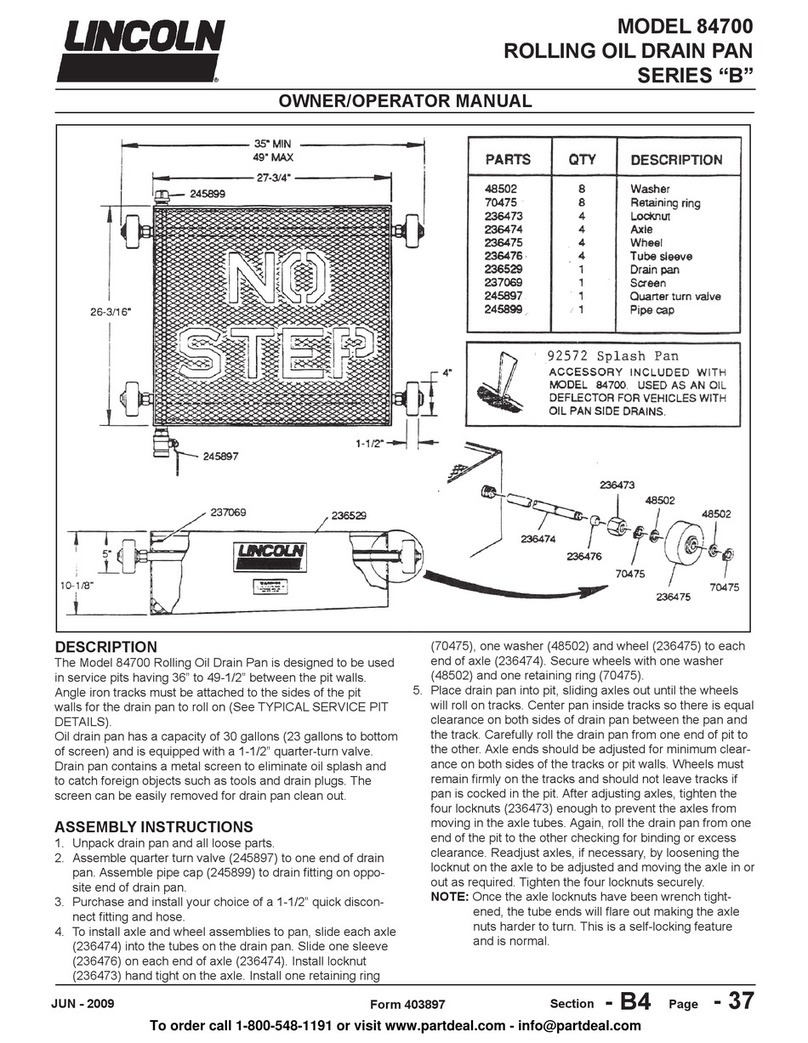
Lincoln
Lincoln 84700 Owner's manual
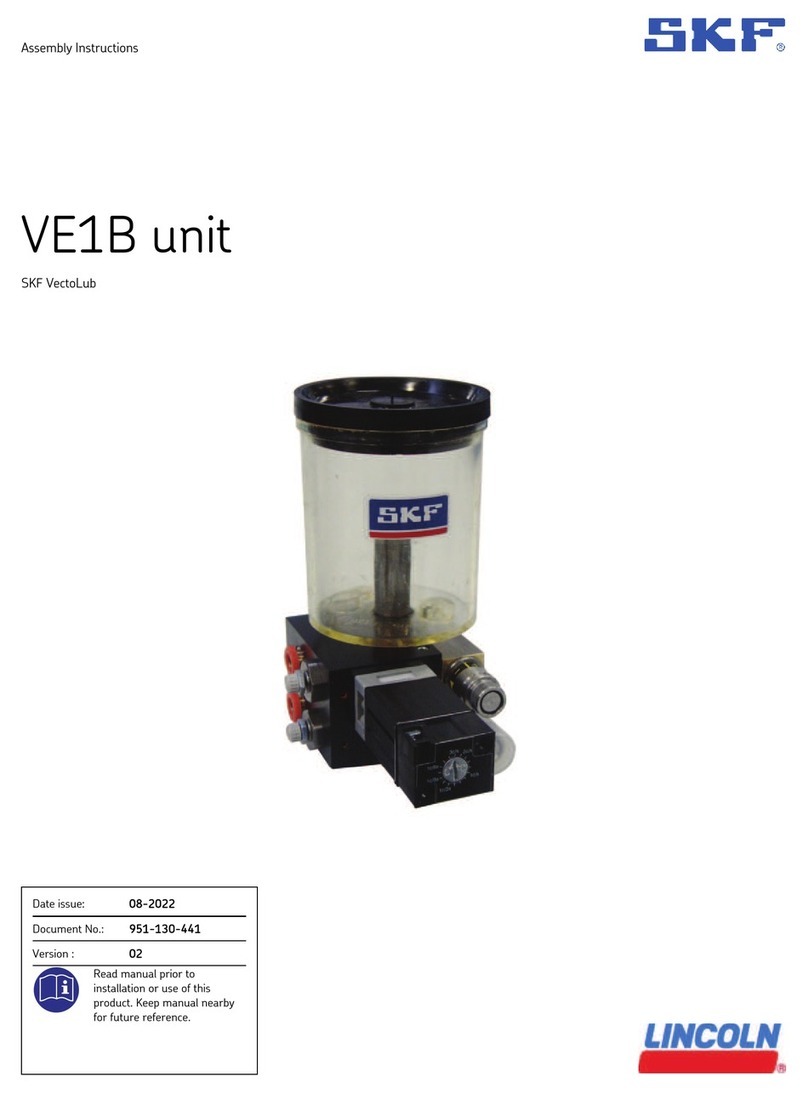
Lincoln
Lincoln SKF VectoLub VE1B unit User manual
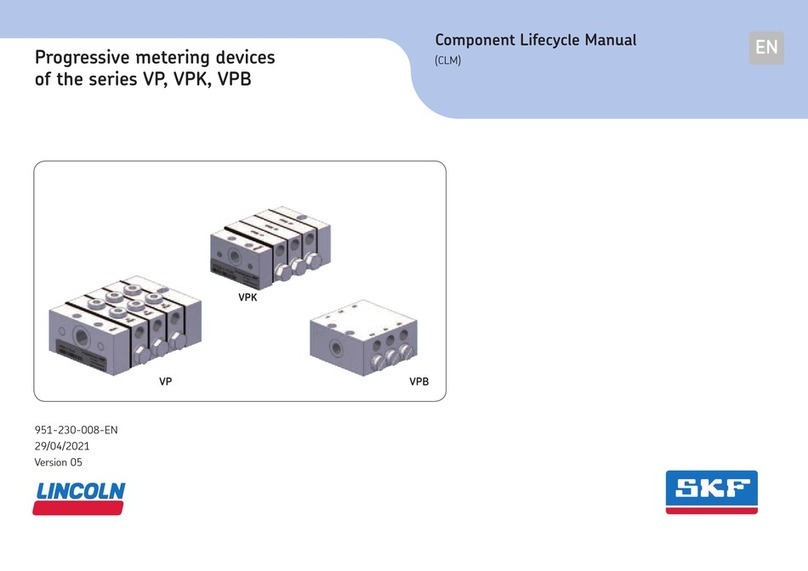
Lincoln
Lincoln SKF VP Series User manual

Lincoln
Lincoln 3662 User manual
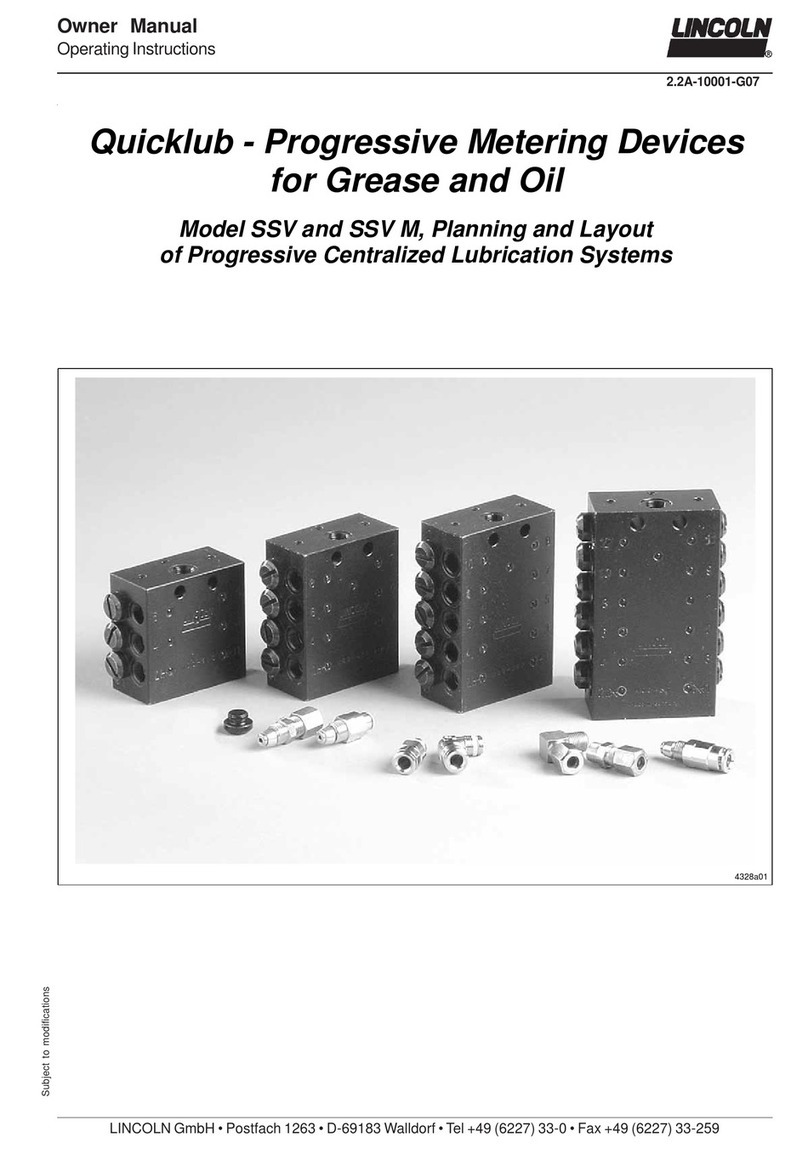
Lincoln
Lincoln Quicklub SSV User manual
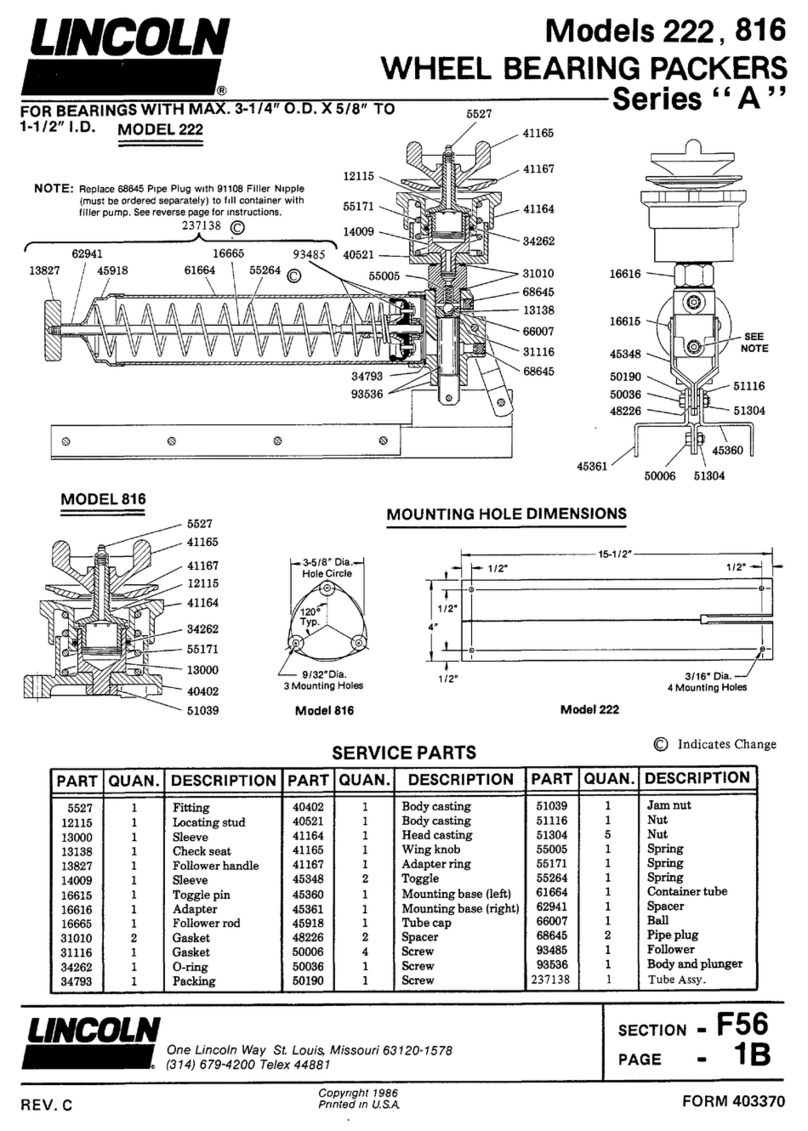
Lincoln
Lincoln A Series User manual

Lincoln
Lincoln Quicklub SSV User manual
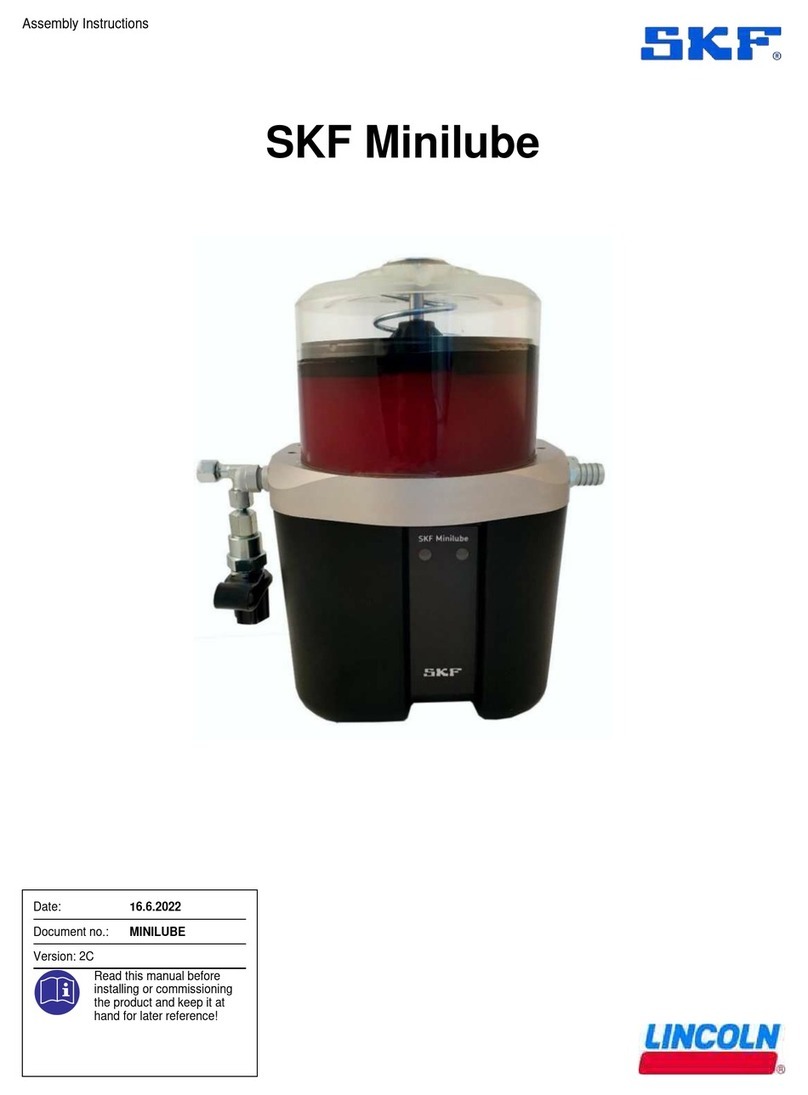
Lincoln
Lincoln SKF Minilube User manual
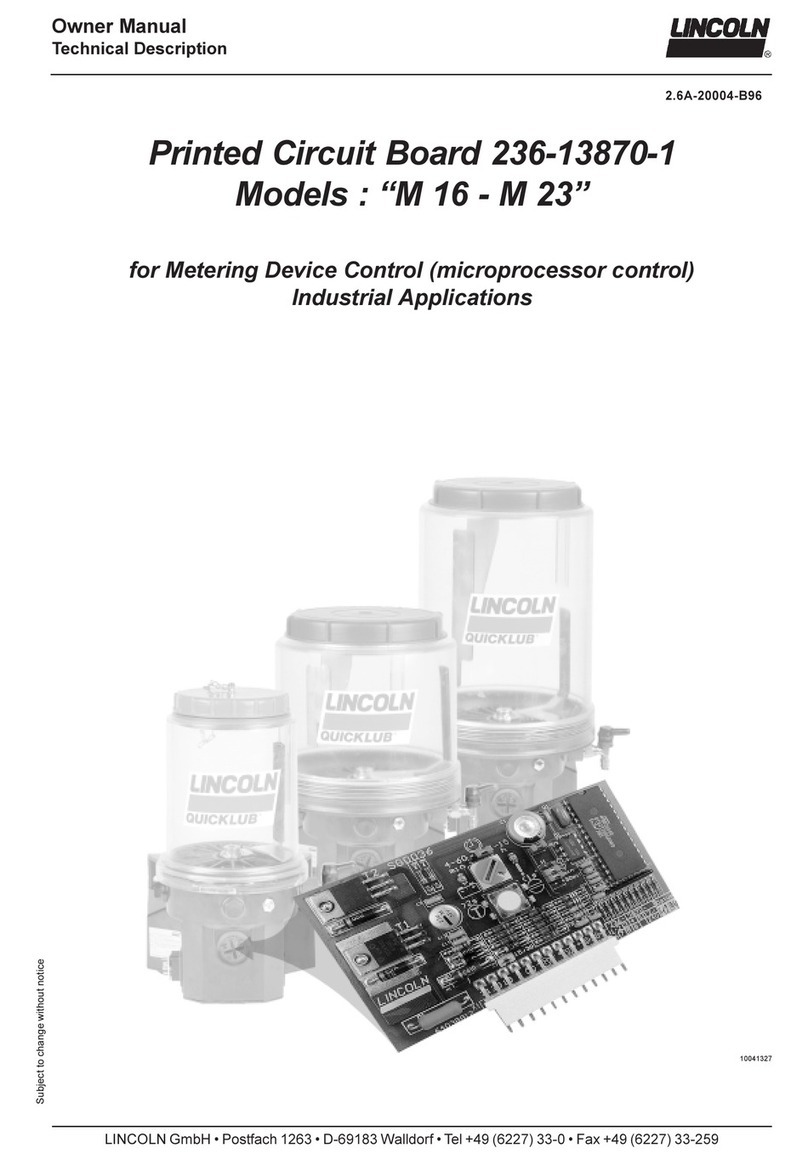
Lincoln
Lincoln M 16 User manual
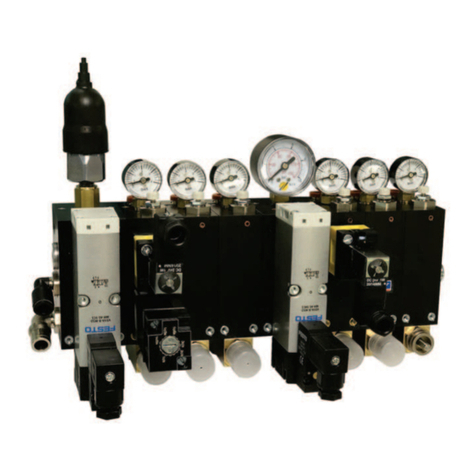
Lincoln
Lincoln SKF VTEC User manual
